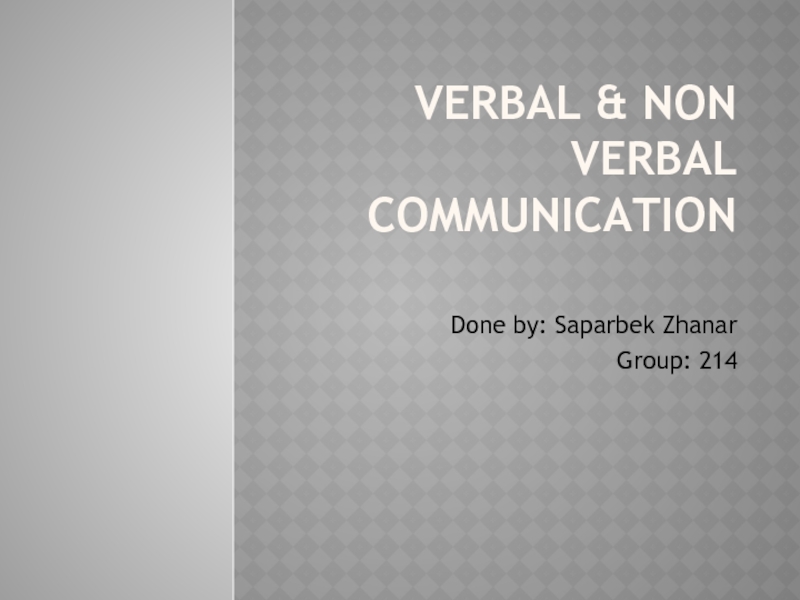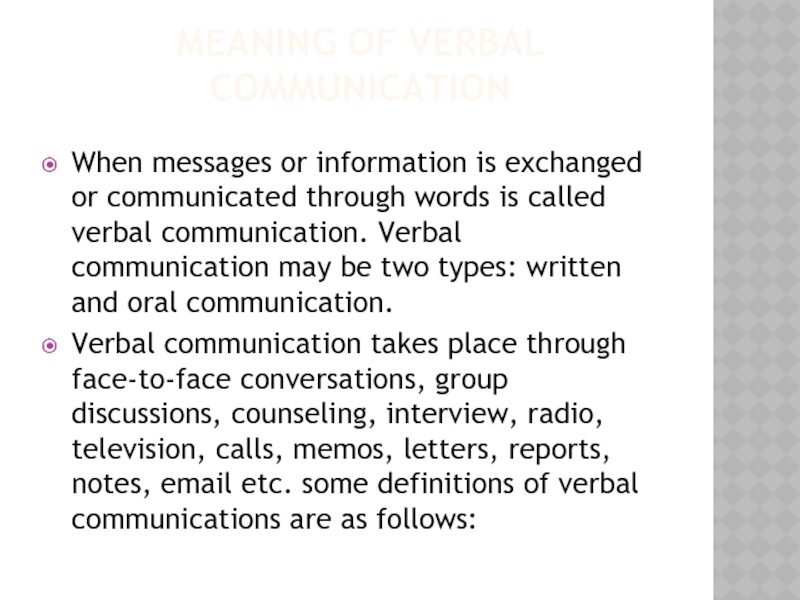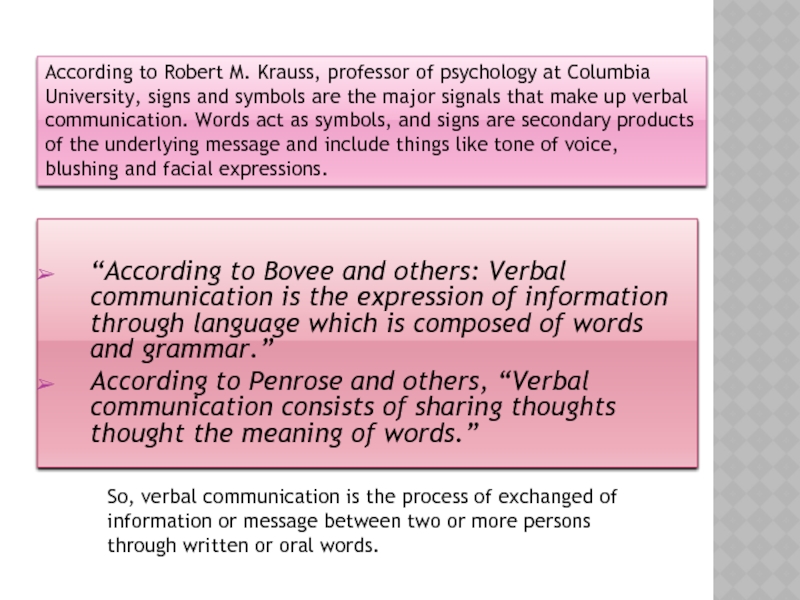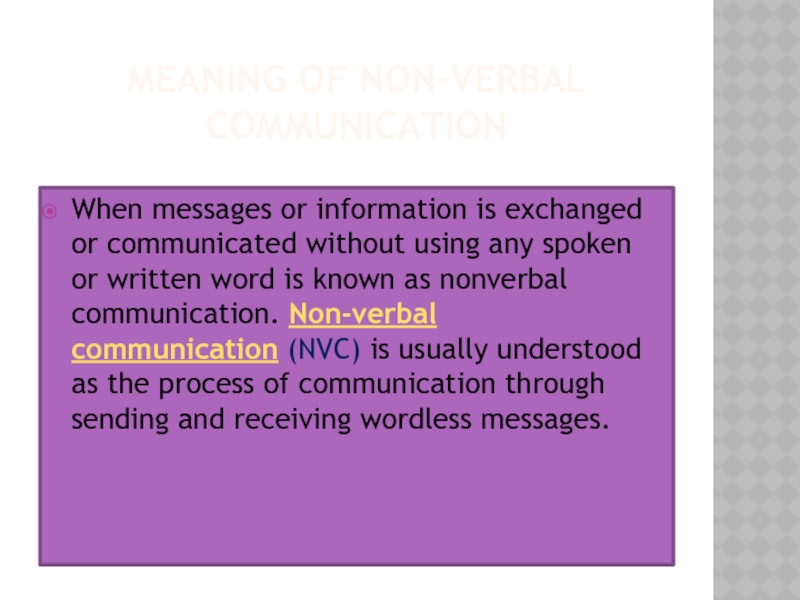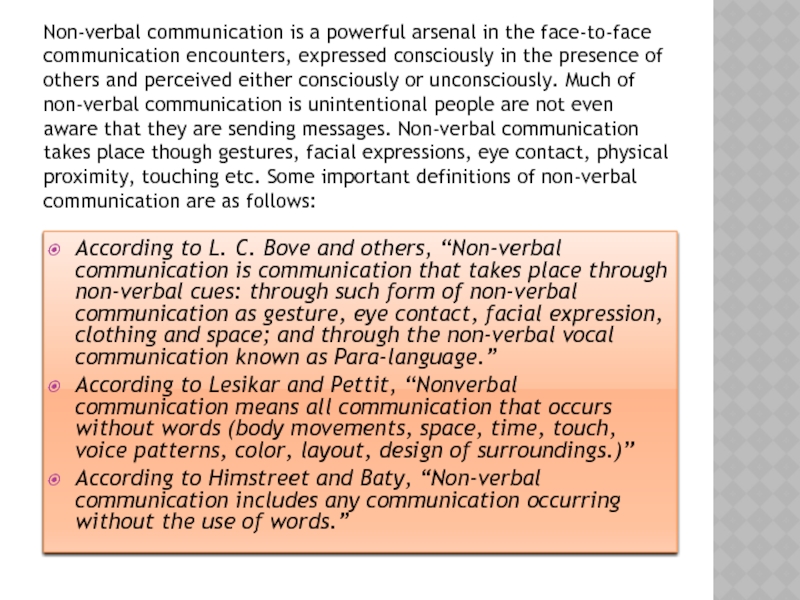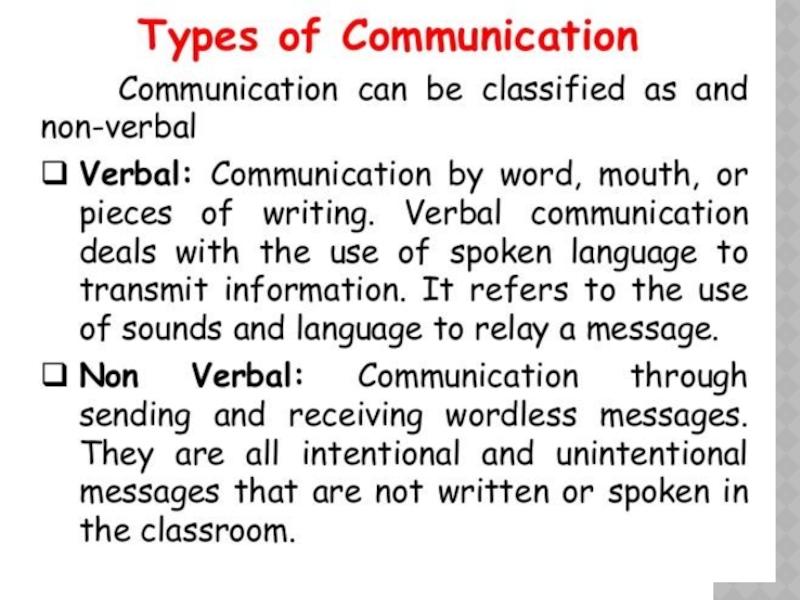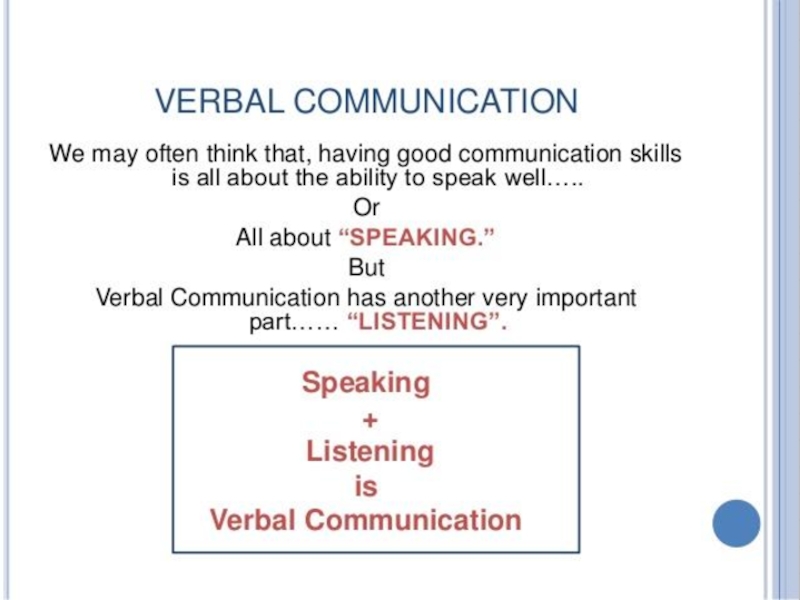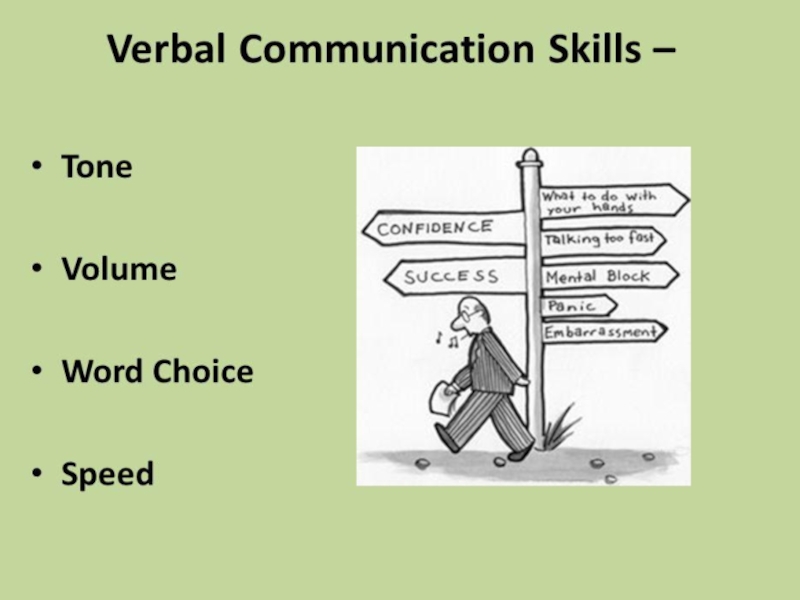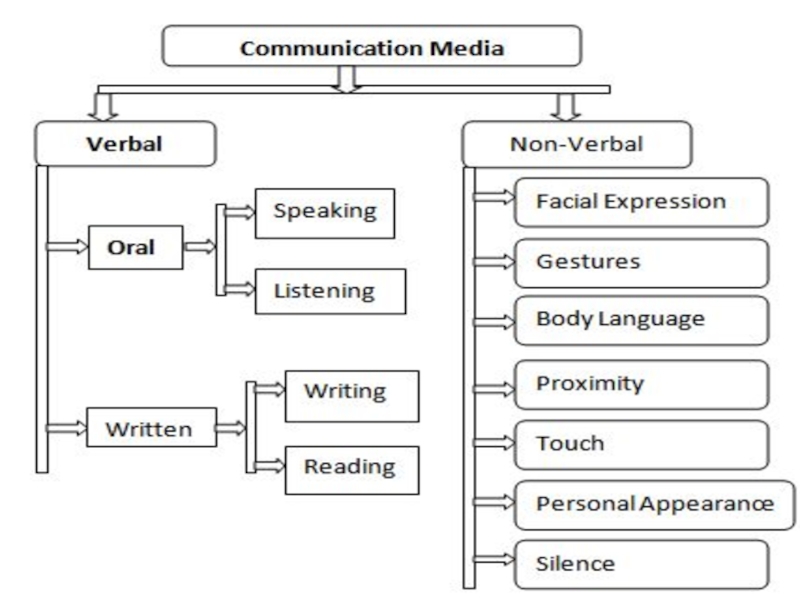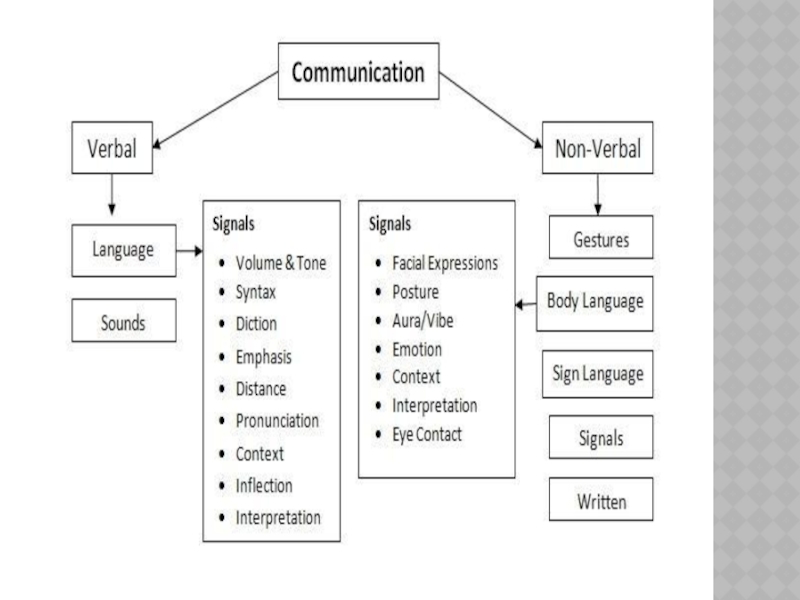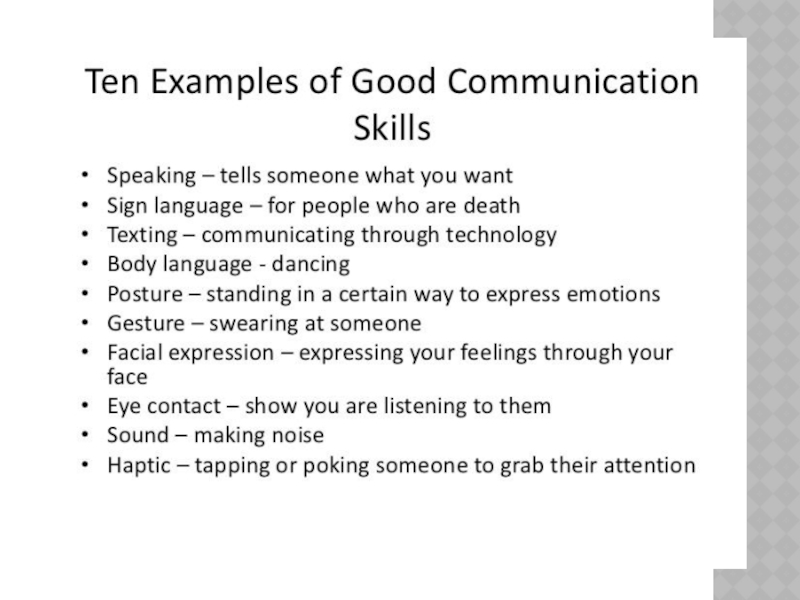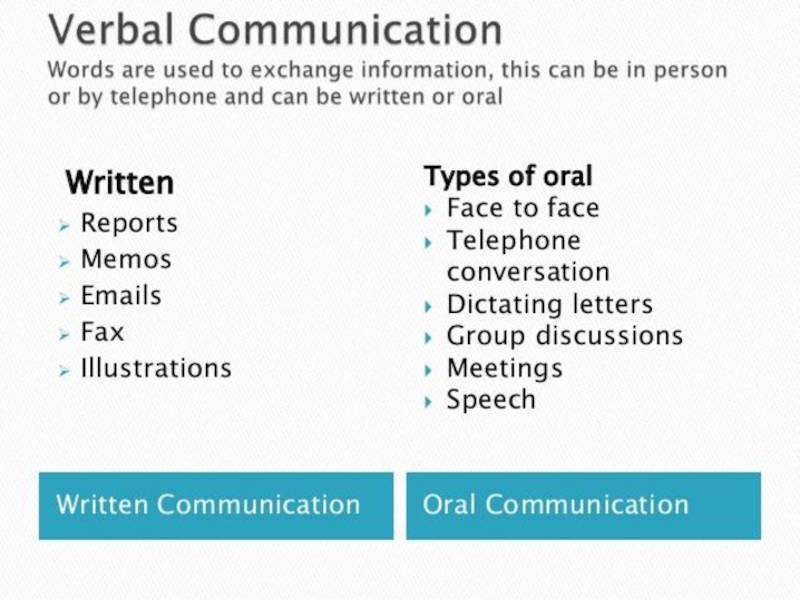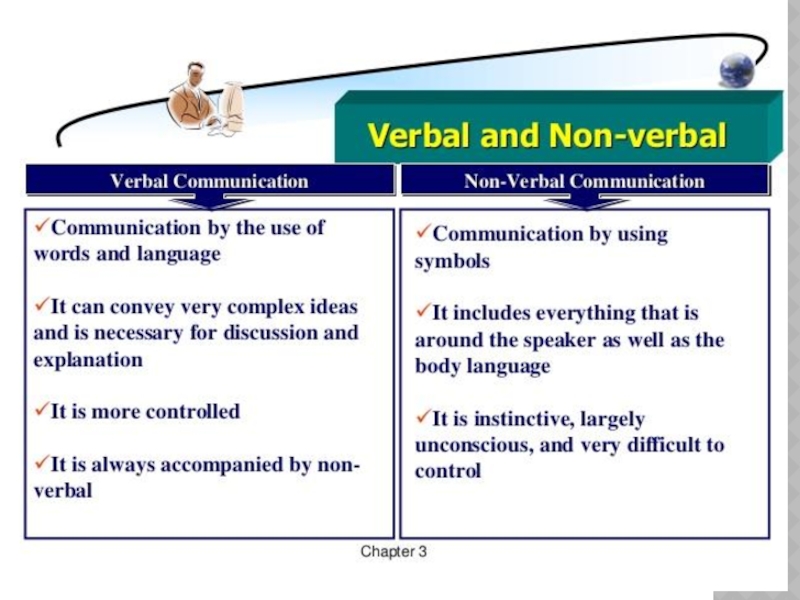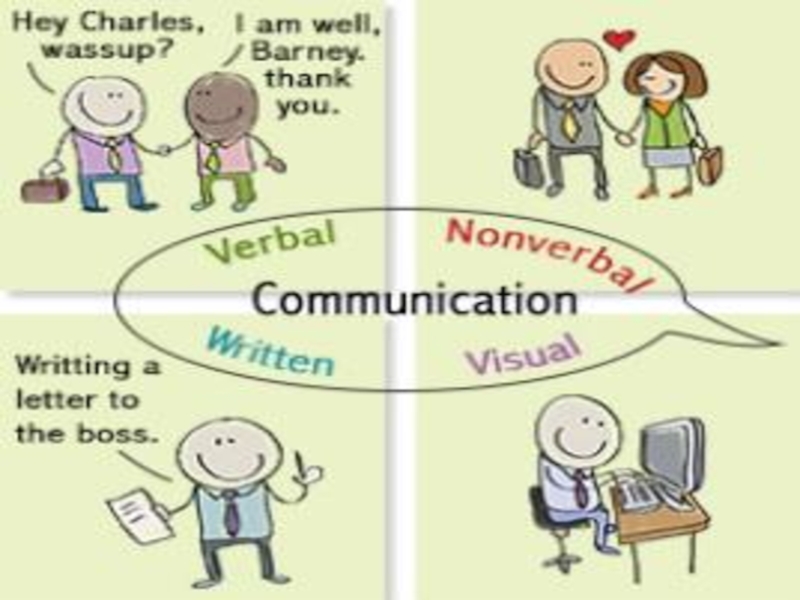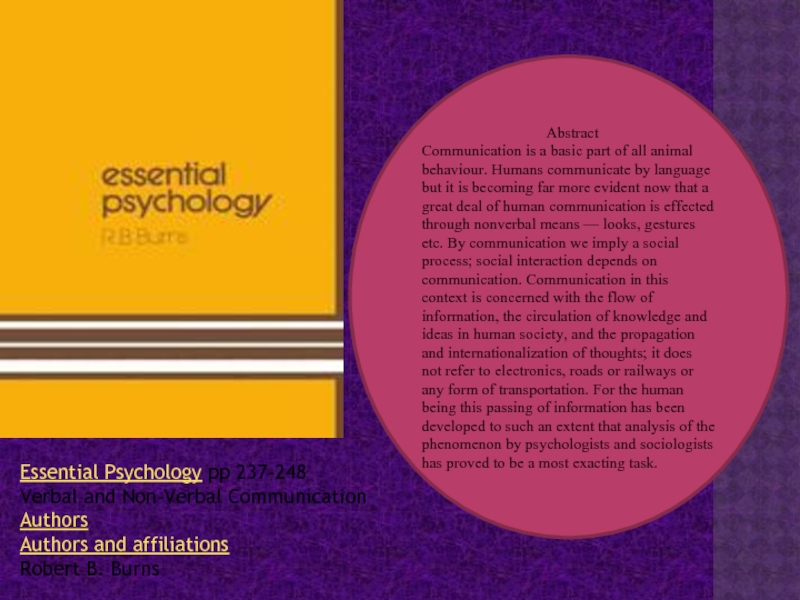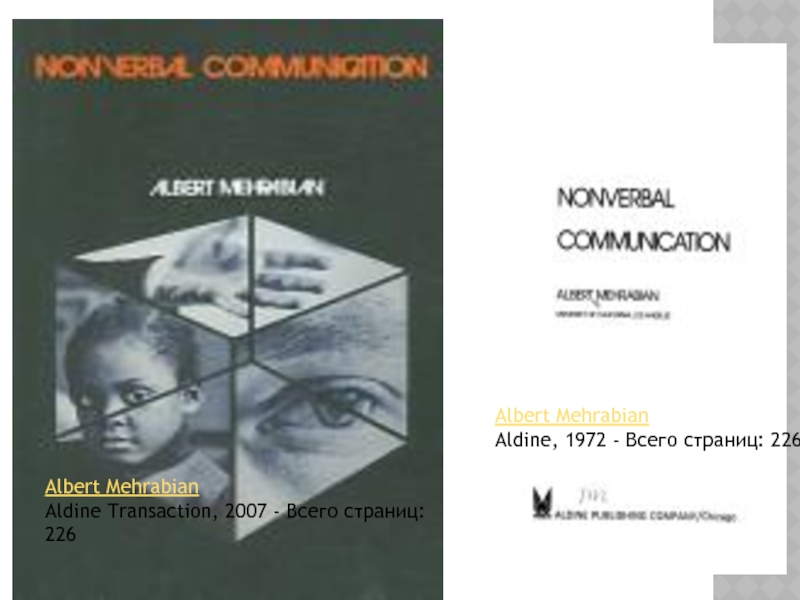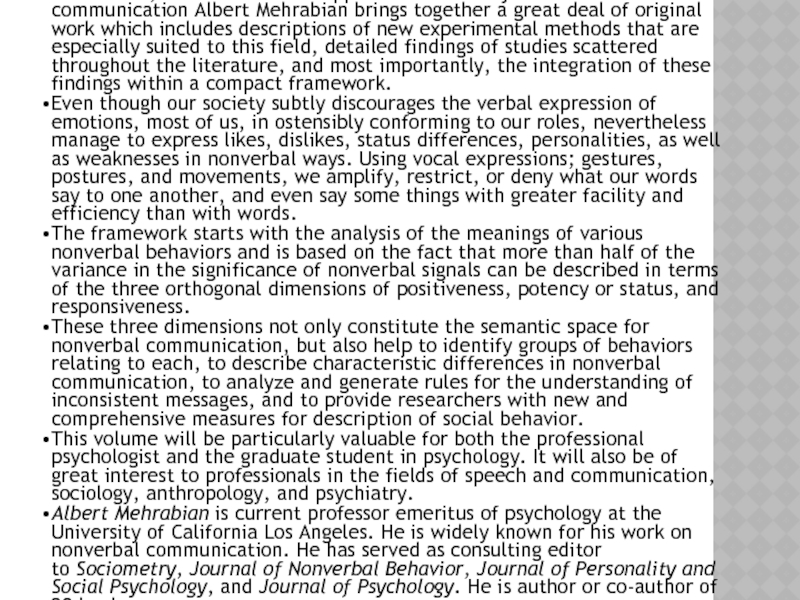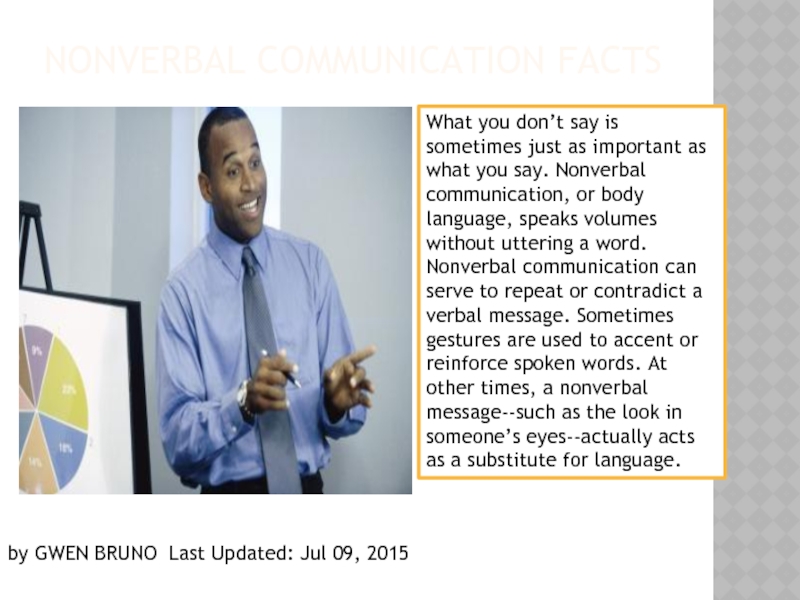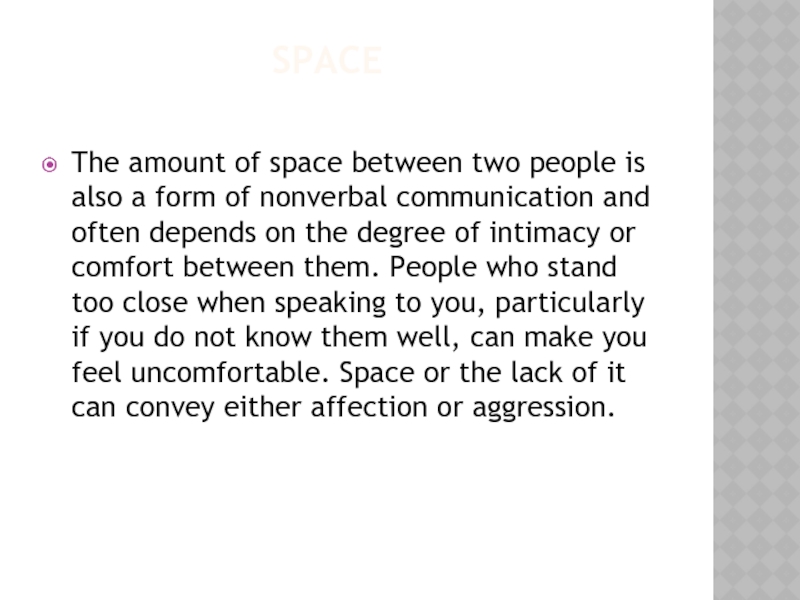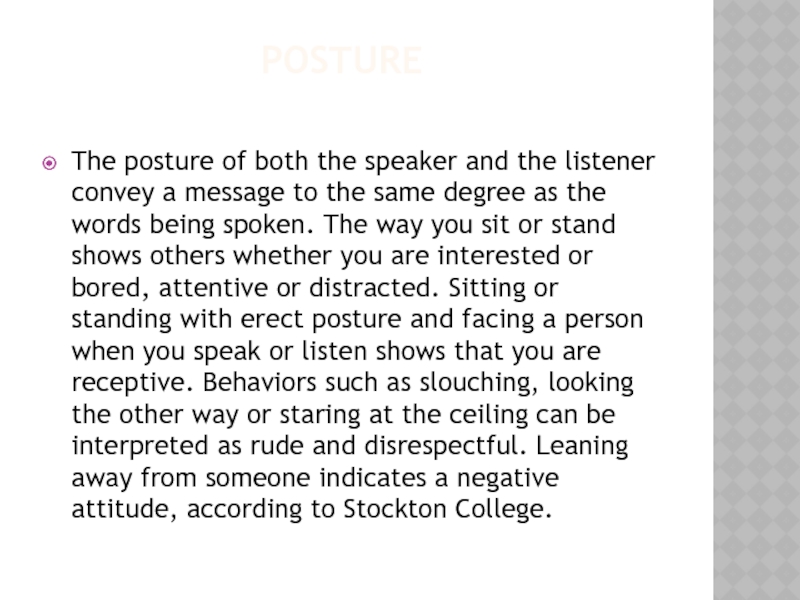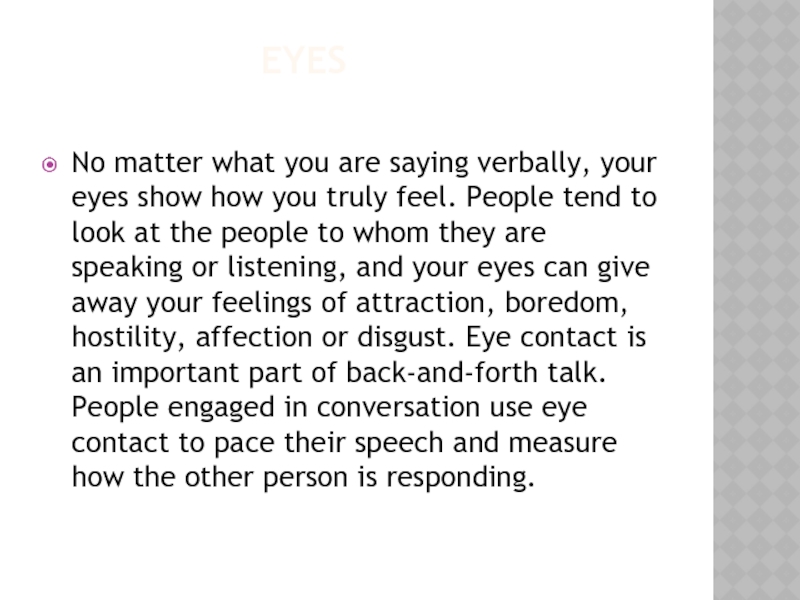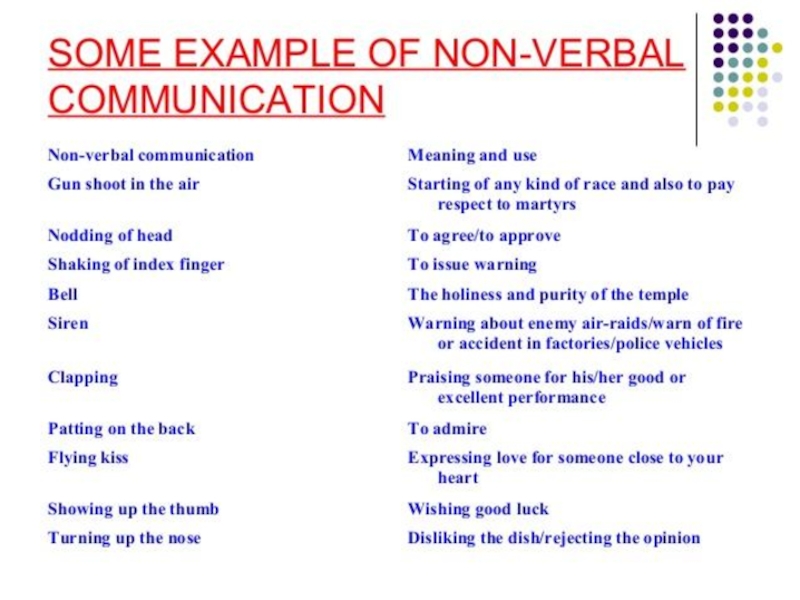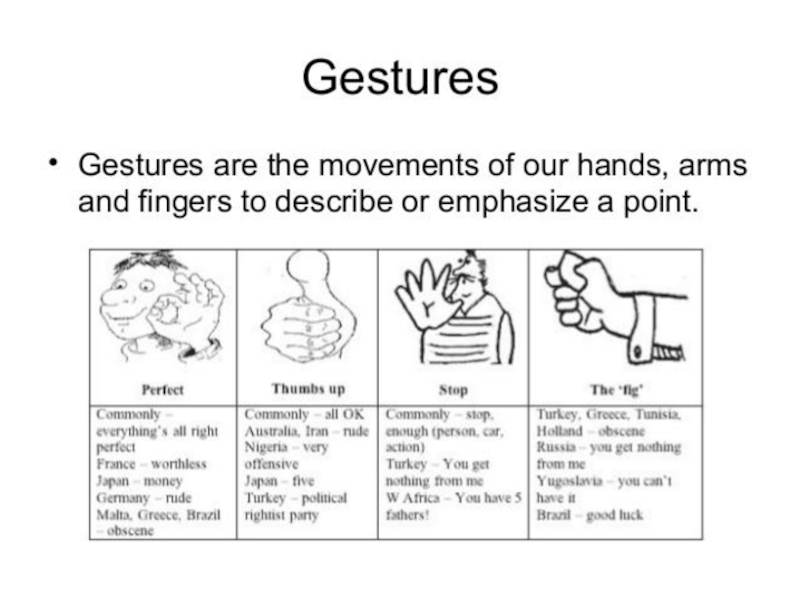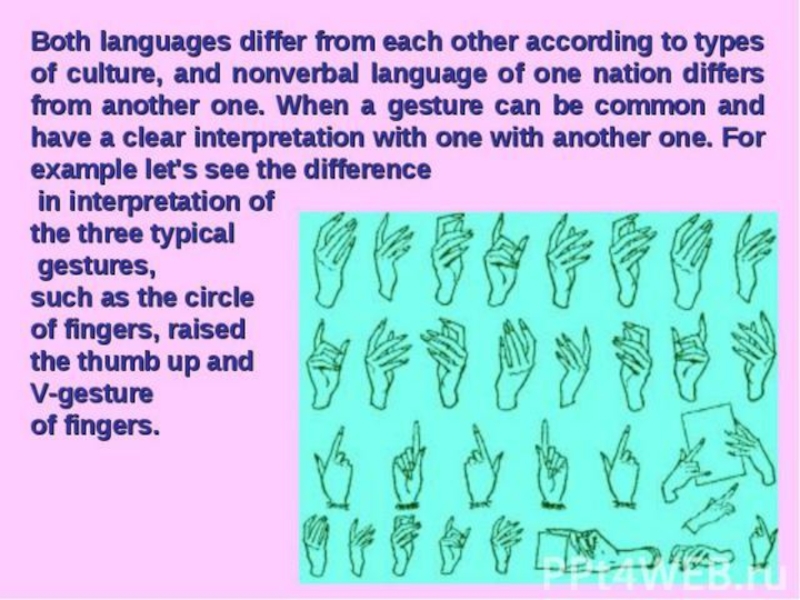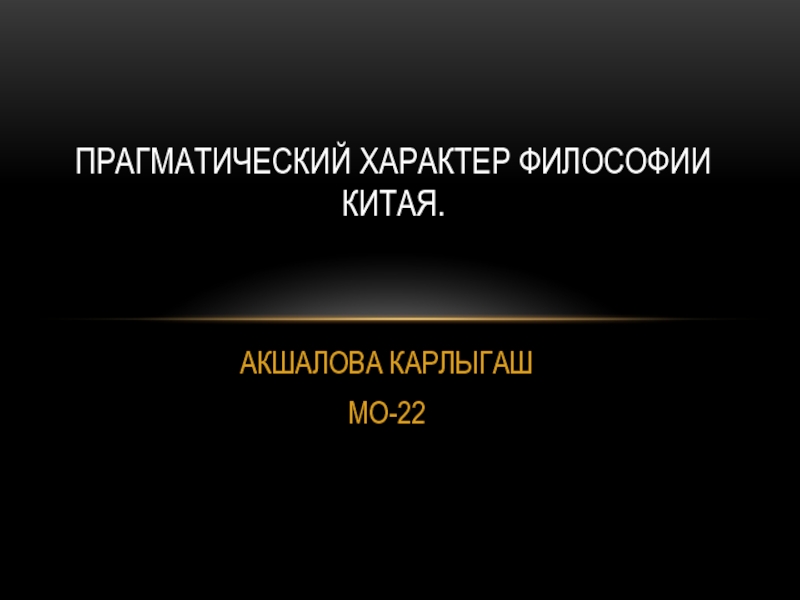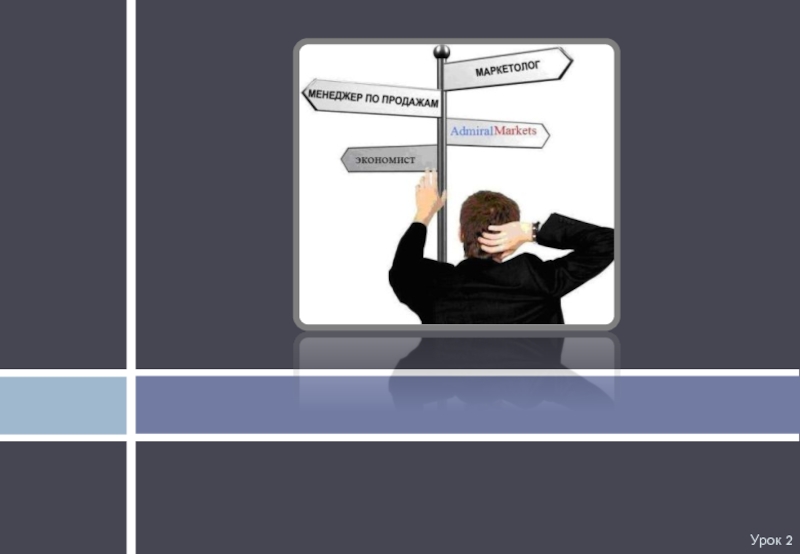- Главная
- Разное
- Дизайн
- Бизнес и предпринимательство
- Аналитика
- Образование
- Развлечения
- Красота и здоровье
- Финансы
- Государство
- Путешествия
- Спорт
- Недвижимость
- Армия
- Графика
- Культурология
- Еда и кулинария
- Лингвистика
- Английский язык
- Астрономия
- Алгебра
- Биология
- География
- Детские презентации
- Информатика
- История
- Литература
- Маркетинг
- Математика
- Медицина
- Менеджмент
- Музыка
- МХК
- Немецкий язык
- ОБЖ
- Обществознание
- Окружающий мир
- Педагогика
- Русский язык
- Технология
- Физика
- Философия
- Химия
- Шаблоны, картинки для презентаций
- Экология
- Экономика
- Юриспруденция
Verbal & Non Verbal Communication презентация
Содержание
- 1. Verbal & Non Verbal Communication
- 2. MEANING OF VERBAL COMMUNICATION When messages
- 3. “According to Bovee and others: Verbal
- 5. Non-verbal communication is a powerful arsenal in
- 15. Essential Psychology pp 237-248 Verbal and Non-Verbal Communication
- 16. Albert Mehrabian Aldine, 1972 - Всего страниц: 226
- 17. Albert Mehrabian
- 18. NONVERBAL COMMUNICATION FACTS by GWEN BRUNO Last
Слайд 2MEANING OF VERBAL COMMUNICATION
When messages or information is exchanged or communicated
Verbal communication takes place through face-to-face conversations, group discussions, counseling, interview, radio, television, calls, memos, letters, reports, notes, email etc. some definitions of verbal communications are as follows:
Слайд 3
“According to Bovee and others: Verbal communication is the expression of
According to Penrose and others, “Verbal communication consists of sharing thoughts thought the meaning of words.”
So, verbal communication is the process of exchanged of information or message between two or more persons through written or oral words.
According to Robert M. Krauss, professor of psychology at Columbia University, signs and symbols are the major signals that make up verbal communication. Words act as symbols, and signs are secondary products of the underlying message and include things like tone of voice, blushing and facial expressions.
Слайд 4
MEANING OF NON-VERBAL COMMUNICATION
When messages or information is exchanged or communicated
Слайд 5Non-verbal communication is a powerful arsenal in the face-to-face communication encounters,
According to L. C. Bove and others, “Non-verbal communication is communication that takes place through non-verbal cues: through such form of non-verbal communication as gesture, eye contact, facial expression, clothing and space; and through the non-verbal vocal communication known as Para-language.”
According to Lesikar and Pettit, “Nonverbal communication means all communication that occurs without words (body movements, space, time, touch, voice patterns, color, layout, design of surroundings.)”
According to Himstreet and Baty, “Non-verbal communication includes any communication occurring without the use of words.”
Слайд 15Essential Psychology pp 237-248
Verbal and Non-Verbal Communication
Authors
Authors and affiliations
Robert B. Burns
Communication is a basic part of all animal behaviour. Humans communicate by language but it is becoming far more evident now that a great deal of human communication is effected through nonverbal means — looks, gestures etc. By communication we imply a social process; social interaction depends on communication. Communication in this context is concerned with the flow of information, the circulation of knowledge and ideas in human society, and the propagation and internationalization of thoughts; it does not refer to electronics, roads or railways or any form of transportation. For the human being this passing of information has been developed to such an extent that analysis of the phenomenon by psychologists and sociologists has proved to be a most exacting task.
Слайд 16Albert Mehrabian
Aldine, 1972 - Всего страниц: 226
Albert Mehrabian
Aldine Transaction, 2007 - Всего страниц:
Слайд 17
Albert Mehrabian
In this new, multidimensional approach to the subject of
Even though our society subtly discourages the verbal expression of emotions, most of us, in ostensibly conforming to our roles, nevertheless manage to express likes, dislikes, status differences, personalities, as well as weaknesses in nonverbal ways. Using vocal expressions; gestures, postures, and movements, we amplify, restrict, or deny what our words say to one another, and even say some things with greater facility and efficiency than with words.
The framework starts with the analysis of the meanings of various nonverbal behaviors and is based on the fact that more than half of the variance in the significance of nonverbal signals can be described in terms of the three orthogonal dimensions of positiveness, potency or status, and responsiveness.
These three dimensions not only constitute the semantic space for nonverbal communication, but also help to identify groups of behaviors relating to each, to describe characteristic differences in nonverbal communication, to analyze and generate rules for the understanding of inconsistent messages, and to provide researchers with new and comprehensive measures for description of social behavior.
This volume will be particularly valuable for both the professional psychologist and the graduate student in psychology. It will also be of great interest to professionals in the fields of speech and communication, sociology, anthropology, and psychiatry.
Albert Mehrabian is current professor emeritus of psychology at the University of California Los Angeles. He is widely known for his work on nonverbal communication. He has served as consulting editor to Sociometry, Journal of Nonverbal Behavior, Journal of Personality and Social Psychology, and Journal of Psychology. He is author or co-author of 20 books.
